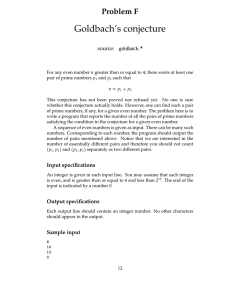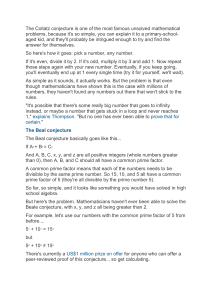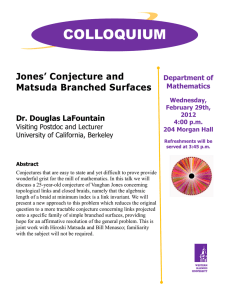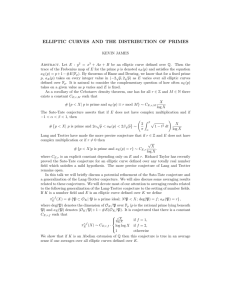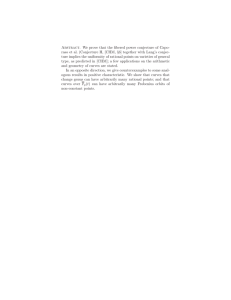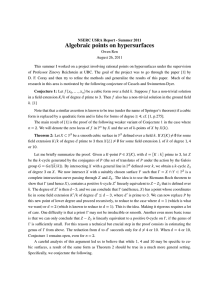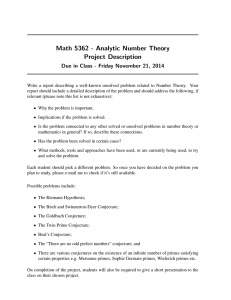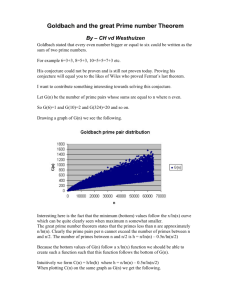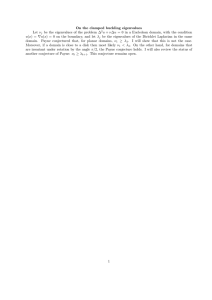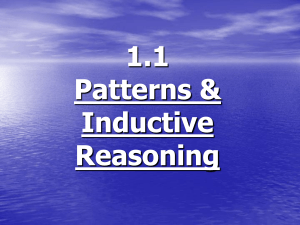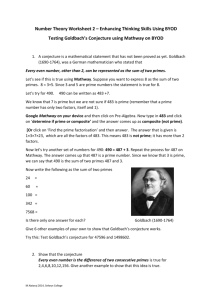A proof of the theorem according to which every prime number
advertisement
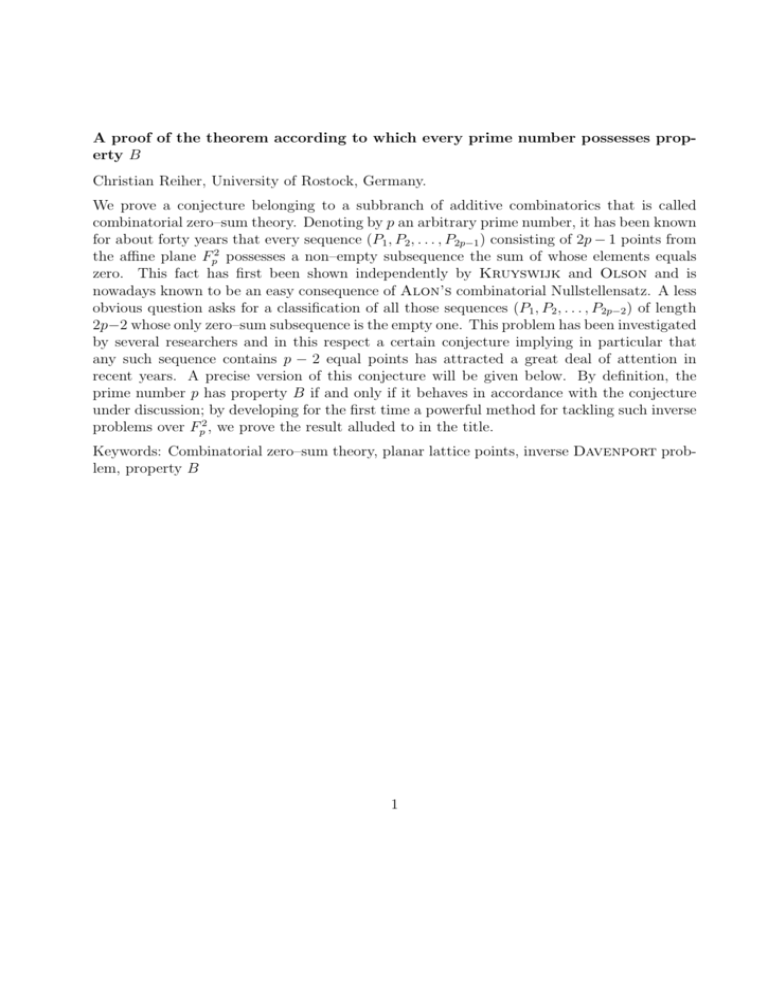
A proof of the theorem according to which every prime number possesses property B Christian Reiher, University of Rostock, Germany. We prove a conjecture belonging to a subbranch of additive combinatorics that is called combinatorial zero–sum theory. Denoting by p an arbitrary prime number, it has been known for about forty years that every sequence (P1 , P2 , . . . , P2p−1 ) consisting of 2p − 1 points from the affine plane Fp2 possesses a non–empty subsequence the sum of whose elements equals zero. This fact has first been shown independently by Kruyswijk and Olson and is nowadays known to be an easy consequence of Alon’s combinatorial Nullstellensatz. A less obvious question asks for a classification of all those sequences (P1 , P2 , . . . , P2p−2 ) of length 2p−2 whose only zero–sum subsequence is the empty one. This problem has been investigated by several researchers and in this respect a certain conjecture implying in particular that any such sequence contains p − 2 equal points has attracted a great deal of attention in recent years. A precise version of this conjecture will be given below. By definition, the prime number p has property B if and only if it behaves in accordance with the conjecture under discussion; by developing for the first time a powerful method for tackling such inverse problems over Fp2 , we prove the result alluded to in the title. Keywords: Combinatorial zero–sum theory, planar lattice points, inverse Davenport problem, property B 1
